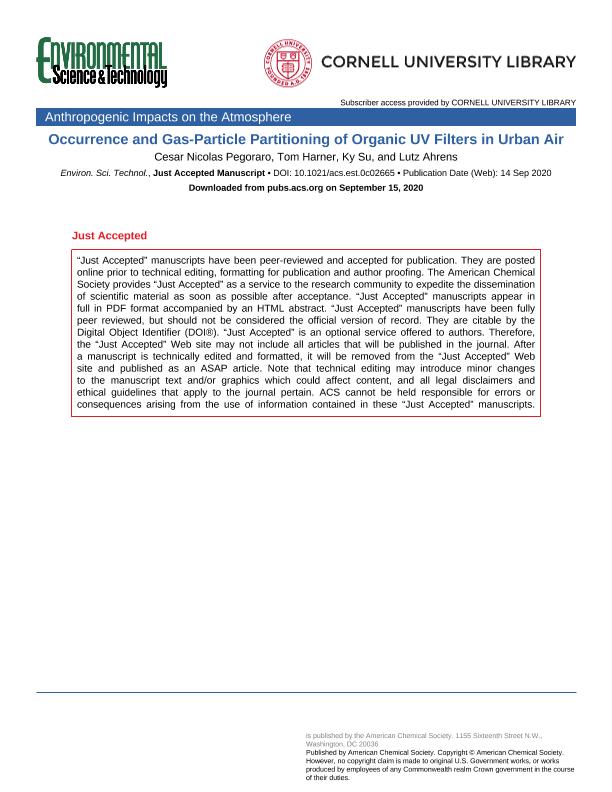Artículo
Occurrence and Gas-Particle Partitioning of Organic UV Filters in Urban Air
Fecha de publicación:
09/2020
Editorial:
American Chemical Society
Revista:
Environmental Science & Technology
ISSN:
0013-936X
Idioma:
Inglés
Tipo de recurso:
Artículo publicado
Clasificación temática:
Resumen
A retrospective analysis of a comprehensive series of high-volume air samples (n = 70) collected during 2010-2011 in Toronto (Canada) was performed. Seven UV compounds were analyzed by gas chromatography-tandem mass spectrometry (GC-MS/MS) with sum of concentrations (gas + particle phase) ranging from 80 to 2030 pg/m3. Homosalate (HMS) was the most prevalent organic UV-filter in air (47% of the total concentration), followed by 2-ethylhexyl salicylate (EHS, ∼29%), E- and Z-2-ethylhexyl 4-methoxycinnamate (EHMC, ∼17%). Ambient air (gas + particle phase) concentrations of organic UV-filters showed a strong seasonality, with peak levels during the summer. An analysis of Clausius-Clapeyron slopes indicated that much of the ambient burden of organic UV-filters are explained by volatilization from terrestrial and aquatic surfaces and supplemented with human activities and use of lotions and sunscreens, containing organic UV-filters, in addition to its use in plastics, textiles, paints, and pesticides. The results showed that organic UV-filters exist mainly in the gas phase with some exceptions, for instance, octocrylene (OCR), which was associated with both gas and particle phases, and avobenzone (AVB), which was predominantly in the particle phase. Lastly, this study revealed the need for basic physical chemical property data for organic UV-filters, including information on transformation rates and products, for better evaluating their environmental fate and effects.
Archivos asociados
Licencia
Identificadores
Colecciones
Articulos(IIB)
Articulos de INSTITUTO DE INVESTIGACIONES BIOLOGICAS
Articulos de INSTITUTO DE INVESTIGACIONES BIOLOGICAS
Citación
Pegoraro, César Nicolás; Harner, Tom; Su, Ky; Ahrens, Lutz; Occurrence and Gas-Particle Partitioning of Organic UV Filters in Urban Air; American Chemical Society; Environmental Science & Technology; 54; 20; 9-2020; 12881-12889
Compartir
Altmétricas




